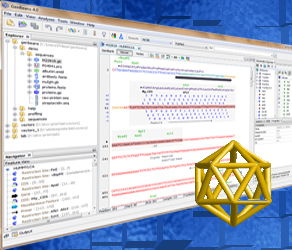ADVERTISEMENT
Protein Primary Structure
Amino Acid Composition
AACompIdent is a tool which allows the identification of a protein from its amino acid composition [references]. It searches the Swiss-Prot and / or TrEMBL databases for proteins, whose amino acid compositions are closest to the amino acid composition given.
AACompSim is a tool which allows the comparison of the amino acid composition of a Swiss-Prot entry with all other Swiss-Prot entries so as to find the proteins whose amino acid compositions are closest to that of the selected entry.
Identify proteins with isoelectric point (pI), molecular weight (Mw), amino acid composition, sequence tag and peptide mass fingerprinting data
Protein Paramaters
Physico-chemical parameters of a protein sequence (amino-acid and atomic compositions, isoelectric point, extinction coefficient, etc.)
Calculate masses of peptides and their post-translational modifications for a UniProtKB/Swiss-Prot or UniProtKB/TrEMBL entry or for a user sequence
Program pepinfo detects and displays various useful metrics about a protein sequence. Pepwindow reads in a protein sequence and displays a graph of the classic Kyte & Doolittle hydropathy plot of that protein. Pepstats outputs a report of simple protein sequence information.
ProtScale allows you to compute and represent the profile produced by any amino acid scale on a selected protein.An amino acid scale is defined by a numerical value assigned to each type of amino acid. The most frequently used scales are the hydrophobicity or hydrophilicity scales and the secondary structure conformational parameters scales, but many other scales exist which are based on different chemical and physical properties of the amino acids. This program provides 56 predefined scales entered from the literature.
Statistical Analysis of Protein Sequences
SAPS evaluates by statistical criteria a wide variety of protein sequence properties. Properties considered include compositional biases, clusters and runs of charge and other amino acid types, different kinds and extents of repetitive structures, locally periodic motifs, and anomalous spacings between identical residue types. The statistics are computed for any single (or appropriately concatenated) protein sequence input.
Hydrophobicity
Draw an HCA (Hydrophobic Cluster Analysis) plot of a protein sequence
An amino acid scale is defined by a numerical value assigned to each type of amino acid. The most frequently used scales are the hydrophobicity or hydrophilicity scales and the secondary structure conformational parameters scales, but many other scales exist which are based on different chemical and physical properties of the amino acids. This program provides 56 predefined scales entered from the literature.
Detection of charged and hydrophobic clusters in proteins. This server provides cluster tree diagrams for proteins based on the charges on the atoms or hydrophobicity of a residue. Euclidean distances between charged atoms (or CA atoms of hydrophobic residues) are calculated and cluster tree diagrams are generated using hierarchical clustering method. These diagrams can be used to visually inspect hydrophobic and charged regions in proteins quickly.
Antigenicity & Epitope Prediction
Given a sequence of aminoacids, this program computes and plots the antigenicity along the polypeptide chain, as predicted by the algorithm of Hopp and Woods (1981).
EpiC collates and presents a structure-function summary and antigenicity prediction of your protein to help you design antibodies that are appropriate to your planned experiments.
This server allows users to predict B-cell epitopes using any of the physico-chemical properties ( hydrophilicity, flexibility/mobility, accessibility, polarity, exposed surface and turns) or combination of properties.
Prediction of Antigenic Epitopes on Protein Surfaces by Consensus Scoring.
The Web Bench
The Web Bench
is the essential companion to the biologist, bringing informational resources and a collection of tools & calculators to facilitate work at the bench and analysis of biological data.
Check out the full online bench here
Check out the full online bench here
Sequence Analysis with GenBeans
 Try GenBeans: Best free software for DNA sequence editing!
Try GenBeans: Best free software for DNA sequence editing!
FEEDBACK
Your comments & your suggestionsare appreciated. Please, notify us for resources and tools that you would like to see on this bench!





